- Sources of Business Finance
- Small Business Loans
- Small Business Grants
- Crowdfunding Sites
- How to Get a Business Loan
- Small Business Insurance Providers
- Best Factoring Companies
- Types of Bank Accounts
- Best Banks for Small Business
- Best Business Bank Accounts
- Open a Business Bank Account
- Bank Accounts for Small Businesses
- Free Business Checking Accounts
- Best Business Credit Cards
- Get a Business Credit Card
- Business Credit Cards for Bad Credit
- Build Business Credit Fast
- Business Loan Eligibility Criteria
- Small-Business Bookkeeping Basics
- How to Set Financial Goals
- Business Loan Calculators
- How to Calculate ROI
- Calculate Net Income
- Calculate Working Capital
- Calculate Operating Income
- Calculate Net Present Value (NPV)
- Calculate Payroll Tax

12 Key Elements of a Business Plan (Top Components Explained)
Starting and running a successful business requires proper planning and execution of effective business tactics and strategies .
You need to prepare many essential business documents when starting a business for maximum success; the business plan is one such document.
When creating a business, you want to achieve business objectives and financial goals like productivity, profitability, and business growth. You need an effective business plan to help you get to your desired business destination.
Even if you are already running a business, the proper understanding and review of the key elements of a business plan help you navigate potential crises and obstacles.
This article will teach you why the business document is at the core of any successful business and its key elements you can not avoid.
Let’s get started.
Why Are Business Plans Important?
Business plans are practical steps or guidelines that usually outline what companies need to do to reach their goals. They are essential documents for any business wanting to grow and thrive in a highly-competitive business environment .
1. Proves Your Business Viability
A business plan gives companies an idea of how viable they are and what actions they need to take to grow and reach their financial targets. With a well-written and clearly defined business plan, your business is better positioned to meet its goals.
2. Guides You Throughout the Business Cycle
A business plan is not just important at the start of a business. As a business owner, you must draw up a business plan to remain relevant throughout the business cycle .
During the starting phase of your business, a business plan helps bring your ideas into reality. A solid business plan can secure funding from lenders and investors.
After successfully setting up your business, the next phase is management. Your business plan still has a role to play in this phase, as it assists in communicating your business vision to employees and external partners.
Essentially, your business plan needs to be flexible enough to adapt to changes in the needs of your business.
3. Helps You Make Better Business Decisions
As a business owner, you are involved in an endless decision-making cycle. Your business plan helps you find answers to your most crucial business decisions.
A robust business plan helps you settle your major business components before you launch your product, such as your marketing and sales strategy and competitive advantage.
4. Eliminates Big Mistakes
Many small businesses fail within their first five years for several reasons: lack of financing, stiff competition, low market need, inadequate teams, and inefficient pricing strategy.
Creating an effective plan helps you eliminate these big mistakes that lead to businesses' decline. Every business plan element is crucial for helping you avoid potential mistakes before they happen.
5. Secures Financing and Attracts Top Talents
Having an effective plan increases your chances of securing business loans. One of the essential requirements many lenders ask for to grant your loan request is your business plan.
A business plan helps investors feel confident that your business can attract a significant return on investments ( ROI ).
You can attract and retain top-quality talents with a clear business plan. It inspires your employees and keeps them aligned to achieve your strategic business goals.
Key Elements of Business Plan
Starting and running a successful business requires well-laid actions and supporting documents that better position a company to achieve its business goals and maximize success.
A business plan is a written document with relevant information detailing business objectives and how it intends to achieve its goals.
With an effective business plan, investors, lenders, and potential partners understand your organizational structure and goals, usually around profitability, productivity, and growth.
Every successful business plan is made up of key components that help solidify the efficacy of the business plan in delivering on what it was created to do.
Here are some of the components of an effective business plan.
1. Executive Summary
One of the key elements of a business plan is the executive summary. Write the executive summary as part of the concluding topics in the business plan. Creating an executive summary with all the facts and information available is easier.
In the overall business plan document, the executive summary should be at the forefront of the business plan. It helps set the tone for readers on what to expect from the business plan.
A well-written executive summary includes all vital information about the organization's operations, making it easy for a reader to understand.
The key points that need to be acted upon are highlighted in the executive summary. They should be well spelled out to make decisions easy for the management team.
A good and compelling executive summary points out a company's mission statement and a brief description of its products and services.

An executive summary summarizes a business's expected value proposition to distinct customer segments. It highlights the other key elements to be discussed during the rest of the business plan.
Including your prior experiences as an entrepreneur is a good idea in drawing up an executive summary for your business. A brief but detailed explanation of why you decided to start the business in the first place is essential.
Adding your company's mission statement in your executive summary cannot be overemphasized. It creates a culture that defines how employees and all individuals associated with your company abide when carrying out its related processes and operations.
Your executive summary should be brief and detailed to catch readers' attention and encourage them to learn more about your company.
Components of an Executive Summary
Here are some of the information that makes up an executive summary:
- The name and location of your company
- Products and services offered by your company
- Mission and vision statements
- Success factors of your business plan
2. Business Description
Your business description needs to be exciting and captivating as it is the formal introduction a reader gets about your company.
What your company aims to provide, its products and services, goals and objectives, target audience , and potential customers it plans to serve need to be highlighted in your business description.
A company description helps point out notable qualities that make your company stand out from other businesses in the industry. It details its unique strengths and the competitive advantages that give it an edge to succeed over its direct and indirect competitors.
Spell out how your business aims to deliver on the particular needs and wants of identified customers in your company description, as well as the particular industry and target market of the particular focus of the company.
Include trends and significant competitors within your particular industry in your company description. Your business description should contain what sets your company apart from other businesses and provides it with the needed competitive advantage.
In essence, if there is any area in your business plan where you need to brag about your business, your company description provides that unique opportunity as readers look to get a high-level overview.
Components of a Business Description
Your business description needs to contain these categories of information.
- Business location
- The legal structure of your business
- Summary of your business’s short and long-term goals
3. Market Analysis
The market analysis section should be solely based on analytical research as it details trends particular to the market you want to penetrate.
Graphs, spreadsheets, and histograms are handy data and statistical tools you need to utilize in your market analysis. They make it easy to understand the relationship between your current ideas and the future goals you have for the business.
All details about the target customers you plan to sell products or services should be in the market analysis section. It helps readers with a helpful overview of the market.
In your market analysis, you provide the needed data and statistics about industry and market share, the identified strengths in your company description, and compare them against other businesses in the same industry.
The market analysis section aims to define your target audience and estimate how your product or service would fare with these identified audiences.

Market analysis helps visualize a target market by researching and identifying the primary target audience of your company and detailing steps and plans based on your audience location.
Obtaining this information through market research is essential as it helps shape how your business achieves its short-term and long-term goals.
Market Analysis Factors
Here are some of the factors to be included in your market analysis.
- The geographical location of your target market
- Needs of your target market and how your products and services can meet those needs
- Demographics of your target audience
Components of the Market Analysis Section
Here is some of the information to be included in your market analysis.
- Industry description and statistics
- Demographics and profile of target customers
- Marketing data for your products and services
- Detailed evaluation of your competitors
4. Marketing Plan
A marketing plan defines how your business aims to reach its target customers, generate sales leads, and, ultimately, make sales.
Promotion is at the center of any successful marketing plan. It is a series of steps to pitch a product or service to a larger audience to generate engagement. Note that the marketing strategy for a business should not be stagnant and must evolve depending on its outcome.
Include the budgetary requirement for successfully implementing your marketing plan in this section to make it easy for readers to measure your marketing plan's impact in terms of numbers.
The information to include in your marketing plan includes marketing and promotion strategies, pricing plans and strategies , and sales proposals. You need to include how you intend to get customers to return and make repeat purchases in your business plan.

5. Sales Strategy
Sales strategy defines how you intend to get your product or service to your target customers and works hand in hand with your business marketing strategy.
Your sales strategy approach should not be complex. Break it down into simple and understandable steps to promote your product or service to target customers.
Apart from the steps to promote your product or service, define the budget you need to implement your sales strategies and the number of sales reps needed to help the business assist in direct sales.
Your sales strategy should be specific on what you need and how you intend to deliver on your sales targets, where numbers are reflected to make it easier for readers to understand and relate better.

6. Competitive Analysis
Providing transparent and honest information, even with direct and indirect competitors, defines a good business plan. Provide the reader with a clear picture of your rank against major competitors.
Identifying your competitors' weaknesses and strengths is useful in drawing up a market analysis. It is one information investors look out for when assessing business plans.
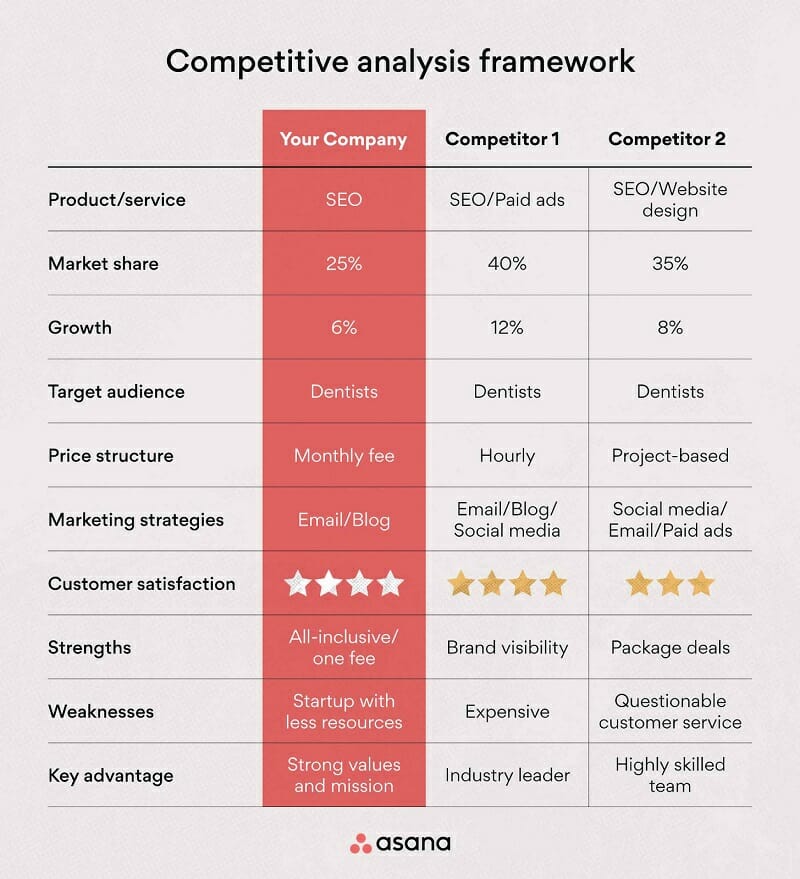
The competitive analysis section clearly defines the notable differences between your company and your competitors as measured against their strengths and weaknesses.
This section should define the following:
- Your competitors' identified advantages in the market
- How do you plan to set up your company to challenge your competitors’ advantage and gain grounds from them?
- The standout qualities that distinguish you from other companies
- Potential bottlenecks you have identified that have plagued competitors in the same industry and how you intend to overcome these bottlenecks
In your business plan, you need to prove your industry knowledge to anyone who reads your business plan. The competitive analysis section is designed for that purpose.
7. Management and Organization
Management and organization are key components of a business plan. They define its structure and how it is positioned to run.
Whether you intend to run a sole proprietorship, general or limited partnership, or corporation, the legal structure of your business needs to be clearly defined in your business plan.
Use an organizational chart that illustrates the hierarchy of operations of your company and spells out separate departments and their roles and functions in this business plan section.
The management and organization section includes profiles of advisors, board of directors, and executive team members and their roles and responsibilities in guaranteeing the company's success.
Apparent factors that influence your company's corporate culture, such as human resources requirements and legal structure, should be well defined in the management and organization section.
Defining the business's chain of command if you are not a sole proprietor is necessary. It leaves room for little or no confusion about who is in charge or responsible during business operations.
This section provides relevant information on how the management team intends to help employees maximize their strengths and address their identified weaknesses to help all quarters improve for the business's success.
8. Products and Services
This business plan section describes what a company has to offer regarding products and services to the maximum benefit and satisfaction of its target market.
Boldly spell out pending patents or copyright products and intellectual property in this section alongside costs, expected sales revenue, research and development, and competitors' advantage as an overview.
At this stage of your business plan, the reader needs to know what your business plans to produce and sell and the benefits these products offer in meeting customers' needs.
The supply network of your business product, production costs, and how you intend to sell the products are crucial components of the products and services section.
Investors are always keen on this information to help them reach a balanced assessment of if investing in your business is risky or offer benefits to them.
You need to create a link in this section on how your products or services are designed to meet the market's needs and how you intend to keep those customers and carve out a market share for your company.
Repeat purchases are the backing that a successful business relies on and measure how much customers are into what your company is offering.
This section is more like an expansion of the executive summary section. You need to analyze each product or service under the business.
9. Operating Plan
An operations plan describes how you plan to carry out your business operations and processes.
The operating plan for your business should include:
- Information about how your company plans to carry out its operations.
- The base location from which your company intends to operate.
- The number of employees to be utilized and other information about your company's operations.
- Key business processes.
This section should highlight how your organization is set up to run. You can also introduce your company's management team in this section, alongside their skills, roles, and responsibilities in the company.
The best way to introduce the company team is by drawing up an organizational chart that effectively maps out an organization's rank and chain of command.
What should be spelled out to readers when they come across this business plan section is how the business plans to operate day-in and day-out successfully.
10. Financial Projections and Assumptions
Bringing your great business ideas into reality is why business plans are important. They help create a sustainable and viable business.
The financial section of your business plan offers significant value. A business uses a financial plan to solve all its financial concerns, which usually involves startup costs, labor expenses, financial projections, and funding and investor pitches.
All key assumptions about the business finances need to be listed alongside the business financial projection, and changes to be made on the assumptions side until it balances with the projection for the business.
The financial plan should also include how the business plans to generate income and the capital expenditure budgets that tend to eat into the budget to arrive at an accurate cash flow projection for the business.
Base your financial goals and expectations on extensive market research backed with relevant financial statements for the relevant period.
Examples of financial statements you can include in the financial projections and assumptions section of your business plan include:
- Projected income statements
- Cash flow statements
- Balance sheets
- Income statements
Revealing the financial goals and potentials of the business is what the financial projection and assumption section of your business plan is all about. It needs to be purely based on facts that can be measurable and attainable.
11. Request For Funding
The request for funding section focuses on the amount of money needed to set up your business and underlying plans for raising the money required. This section includes plans for utilizing the funds for your business's operational and manufacturing processes.
When seeking funding, a reasonable timeline is required alongside it. If the need arises for additional funding to complete other business-related projects, you are not left scampering and desperate for funds.
If you do not have the funds to start up your business, then you should devote a whole section of your business plan to explaining the amount of money you need and how you plan to utilize every penny of the funds. You need to explain it in detail for a future funding request.
When an investor picks up your business plan to analyze it, with all your plans for the funds well spelled out, they are motivated to invest as they have gotten a backing guarantee from your funding request section.
Include timelines and plans for how you intend to repay the loans received in your funding request section. This addition keeps investors assured that they could recoup their investment in the business.
12. Exhibits and Appendices
Exhibits and appendices comprise the final section of your business plan and contain all supporting documents for other sections of the business plan.
Some of the documents that comprise the exhibits and appendices section includes:
- Legal documents
- Licenses and permits
- Credit histories
- Customer lists
The choice of what additional document to include in your business plan to support your statements depends mainly on the intended audience of your business plan. Hence, it is better to play it safe and not leave anything out when drawing up the appendix and exhibit section.
Supporting documentation is particularly helpful when you need funding or support for your business. This section provides investors with a clearer understanding of the research that backs the claims made in your business plan.
There are key points to include in the appendix and exhibits section of your business plan.
- The management team and other stakeholders resume
- Marketing research
- Permits and relevant legal documents
- Financial documents
Was This Article Helpful?
Martin luenendonk.
Martin loves entrepreneurship and has helped dozens of entrepreneurs by validating the business idea, finding scalable customer acquisition channels, and building a data-driven organization. During his time working in investment banking, tech startups, and industry-leading companies he gained extensive knowledge in using different software tools to optimize business processes.
This insights and his love for researching SaaS products enables him to provide in-depth, fact-based software reviews to enable software buyers make better decisions.
We earn commissions if you shop through the links below. Read more
8 Components of a Business Plan
Back to Business Plans
Written by: Carolyn Young
Carolyn Young is a business writer who focuses on entrepreneurial concepts and the business formation. She has over 25 years of experience in business roles, and has authored several entrepreneurship textbooks.
Edited by: David Lepeska
David has been writing and learning about business, finance and globalization for a quarter-century, starting with a small New York consulting firm in the 1990s.
Published on February 19, 2023

A key part of the business startup process is putting together a business plan , particularly if you’d like to raise capital. It’s not going to be easy, but it’s absolutely essential, and an invaluable learning tool.
Creating a business plan early helps you think through every aspect of your business, from operations and financing to growth and vision. In the end, the knowledge you’ll gain could be the difference between success and failure.
But what exactly does a business plan consist of? There are eight essential components, all of which are detailed in this handy guide.
1. Executive Summary
The executive summary opens your business plan , but it’s the section you’ll write last. It summarizes the key points and highlights the most important aspects of your plan. Often investors and lenders will only read the executive summary; if it doesn’t capture their interest they’ll stop reading, so it’s important to make it as compelling as possible.
The components touched upon should include:
- The business opportunity – what problem are you solving in the market?
- Your idea, meaning the product or service you’re planning to offer, and why it solves the problem in the market better than other solutions.
- The history of the business so far – what have you done to this point? When you’re just getting started, this may be nothing more than coming up with the idea, choosing a business name , and forming a business entity.
- A summary of the industry, market size, your target customers, and the competition.
- A strong statement about how your company is going to stand out in the market – what will be your competitive advantage?
- A list of specific goals that you plan to achieve in the short term, such as developing your product, launching a marketing campaign, or hiring a key person.
- A summary of your financial plan including cost and sales projections and a break-even analysis.
- A summary of your management team, their roles, and the relevant experience that they have to serve in those roles.
- Your “ask”, if applicable, meaning what you’re requesting from the investor or lender. You’ll include the amount you’d like and how it will be spent, such as “We are seeking $50,000 in seed funding to develop our beta product”.
Remember that if you’re seeking capital, the executive summary could make or break your venture. Take your time and make sure it illustrates how your business is unique in the market and why you’ll succeed.
The executive summary should be no more than two pages long, so it’s important to capture the reader’s interest from the start.
- 2. Company Description/Overview
In this section, you’ll detail your full company history, such as how you came up with the idea for your business and any milestones or achievements.
You’ll also include your mission and vision statements. A mission statement explains what you’d like your business to achieve, its driving force, while a vision statement lays out your long-term plan in terms of growth.
A mission statement might be “Our company aims to make life easier for business owners with intuitive payroll software”, while a vision statement could be “Our objective is to become the go-to comprehensive HR software provider for companies around the globe.”
In this section, you’ll want to list your objectives – specific short-term goals. Examples might include “complete initial product development by ‘date’” or “hire two qualified sales people” or “launch the first version of the product”.
It’s best to divide this section into subsections – company history, mission and vision, and objectives.
3. Products/Services Offered
Here you’ll go into detail about what you’re offering, how it solves a problem in the market, and how it’s unique. Don’t be afraid to share information that is proprietary – investors and lenders are not out to steal your ideas.
Also specify how your product is developed or sourced. Are you manufacturing it or does it require technical development? Are you purchasing a product from a manufacturer or wholesaler?
You’ll also want to specify how you’ll sell your product or service. Will it be a subscription service or a one time purchase? What is your target pricing? On what channels do you plan to sell your product or service, such as online or by direct sales in a store?
Basically, you’re describing what you’re going to sell and how you’ll make money.
- 4. Market Analysis
The market analysis is where you’re going to spend most of your time because it involves a lot of research. You should divide it into four sections.
Industry analysis
You’ll want to find out exactly what’s happening in your industry, such as its growth rate, market size, and any specific trends that are occurring. Where is the industry predicted to be in 10 years? Cite your sources where you can by providing links.
Then describe your company’s place in the market. Is your product going to fit a certain niche? Is there a sub-industry your company will fit within? How will you keep up with industry changes?
Competitor analysis
Now you’ll dig into your competition. Detail your main competitors and how they differentiate themselves in the market. For example, one competitor may advertise convenience while another may tout superior quality. Also highlight your competitors’ weaknesses.
Next, describe how you’ll stand out. Detail your competitive advantages and how you’ll sustain them. This section is extremely important and will be a focus for investors and lenders.
Target market analysis
Here you’ll describe your target market and whether it’s different from your competitors’. For example, maybe you have a younger demographic in mind?
You’ll need to know more about your target market than demographics, though. You’ll want to explain the needs and wants of your ideal customers, how your offering solves their problem, and why they will choose your company.
You should also lay out where you’ll find them, where to place your marketing and where to sell your products. Learning this kind of detail requires going to the source – your potential customers. You can do online surveys or even in-person focus groups.
Your goal will be to uncover as much about these people as possible. When you start selling, you’ll want to keep learning about your customers. You may end up selling to a different target market than you originally thought, which could lead to a marketing shift.
SWOT analysis
SWOT stands for strengths, weaknesses, opportunities, and threats, and it’s one of the more common and helpful business planning tools.
First describe all the specific strengths of your company, such as the quality of your product or some unique feature, such as the experience of your management team. Talk about the elements that will make your company successful.
Next, acknowledge and explore possible weaknesses. You can’t say “none”, because no company is perfect, especially at the start. Maybe you lack funds or face a massive competitor. Whatever it is, detail how you will surmount this hurdle.
Next, talk about the opportunities your company has in the market. Perhaps you’re going to target an underserved segment, or have a technology plan that will help you surge past the competition.
Finally, examine potential threats. It could be a competitor that might try to replicate your product or rapidly advancing technology in your industry. Again, discuss your plans to handle such threats if they come to pass.
5. Marketing and Sales Strategies
Now it’s time to explain how you’re going to find potential customers and convert them into paying customers.
Marketing and advertising plan
When you did your target market analysis, you should have learned a lot about your potential customers, including where to find them. This should help you determine where to advertise.
Maybe you found that your target customers favor TikTok over Instagram and decided to spend more marketing dollars on TikTok. Detail all the marketing channels you plan to use and why.
Your target market analysis should also have given you information about what kind of message will resonate with your target customers. You should understand their needs and wants and how your product solves their problem, then convey that in your marketing.
Start by creating a value proposition, which should be no more than two sentences long and answer the following questions:
- What are you offering
- Whose problem does it solve
- What problem does it solve
- What benefits does it provide
- How is it better than competitor products
An example might be “Payroll software that will handle all the payroll needs of small business owners, making life easier for less.”
Whatever your value proposition, it should be at the heart of all of your marketing.
Sales strategy and tactics
Your sales strategy is a vision to persuade customers to buy, including where you’ll sell and how. For example, you may plan to sell only on your own website, or you may sell from both a physical location and online. On the other hand, you may have a sales team that will make direct sales calls to potential customers, which is more common in business-to-business sales.
Sales tactics are more about how you’re going to get them to buy after they reach your sales channel. Even when selling online, you need something on your site that’s going to get them to go from a site visitor to a paying customer.
By the same token, if you’re going to have a sales team making direct sales, what message are they going to deliver that will entice a sale? It’s best for sales tactics to focus on the customer’s pain point and what value you’re bringing to the table, rather than being aggressively promotional about the greatness of your product and your business.
Pricing strategy
Pricing is not an exact science and should depend on several factors. First, consider how you want your product or service to be perceived in the market. If your differentiator is to be the lowest price, position your company as the “discount” option. Think Walmart, and price your products lower than the competition.
If, on the other hand, you want to be the Mercedes of the market, then you’ll position your product as the luxury option. Of course you’ll have to back this up with superior quality, but being the luxury option allows you to command higher prices.
You can, of course, fall somewhere in the middle, but the point is that pricing is a matter of perception. How you position your product in the market compared to the competition is a big factor in determining your price.
Of course, you’ll have to consider your costs, as well as competitor prices. Obviously, your prices must cover your costs and allow you to make a good profit margin.
Whatever pricing strategy you choose, you’ll justify it in this section of your plan.
- 6. Operations and Management
This section is the real nuts and bolts of your business – how it operates on a day-to-day basis and who is operating it. Again, this section should be divided into subsections.
Operational plan
Your plan of operations should be specific , detailed and mainly logistical. Who will be doing what on a daily, weekly, and monthly basis? How will the business be managed and how will quality be assured? Be sure to detail your suppliers and how and when you’ll order raw materials.
This should also include the roles that will be filled and the various processes that will be part of everyday business operations . Just consider all the critical functions that must be handled for your business to be able to operate on an ongoing basis.
Technology plan
If your product involves technical development, you’ll describe your tech development plan with specific goals and milestones. The plan will also include how many people will be working on this development, and what needs to be done for goals to be met.
If your company is not a technology company, you’ll describe what technologies you plan to use to run your business or make your business more efficient. It could be process automation software, payroll software, or just laptops and tablets for your staff.
Management and organizational structure
Now you’ll describe who’s running the show. It may be just you when you’re starting out, so you’ll detail what your role will be and summarize your background. You’ll also go into detail about any managers that you plan to hire and when that will occur.
Essentially, you’re explaining your management structure and detailing why your strategy will enable smooth and efficient operations.
Ideally, at some point, you’ll have an organizational structure that is a hierarchy of your staff. Describe what you envision your organizational structure to be.
Personnel plan
Detail who you’ve hired or plan to hire and for which roles. For example, you might have a developer, two sales people, and one customer service representative.
Describe each role and what qualifications are needed to perform those roles.
- 7. Financial Plan
Now, you’ll enter the dreaded world of finance. Many entrepreneurs struggle with this part, so you might want to engage a financial professional to help you. A financial plan has five key elements.
Startup Costs
Detail in a spreadsheet every cost you’ll incur before you open your doors. This should determine how much capital you’ll need to launch your business.
Financial projections
Creating financial projections, like many facets of business, is not an exact science. If your company has no history, financial projections can only be an educated guess.
First, come up with realistic sales projections. How much do you expect to sell each month? Lay out at least three years of sales projections, detailing monthly sales growth for the first year, then annually thereafter.
Calculate your monthly costs, keeping in mind that some costs will grow along with sales.
Once you have your numbers projected and calculated, use them to create these three key financial statements:
- Profit and Loss Statement , also known as an income statement. This shows projected revenue and lists all costs, which are then deducted to show net profit or loss.
- Cash Flow Statement. This shows how much cash you have on hand at any given time. It will have a starting balance, projections of cash coming in, and cash going out, which will be used to calculate cash on hand at the end of the reporting period.
- Balance Sheet. This shows the net worth of the business, which is the assets of the business minus debts. Assets include equipment, cash, accounts receivables, inventory, and more. Debts include outstanding loan balances and accounts payable.
You’ll need monthly projected versions of each statement for the first year, then annual projections for the following two years.
Break-even analysis
The break-even point for your business is when costs and revenue are equal. Most startups operate at a loss for a period of time before they break even and start to make a profit. Your break-even analysis will project when your break-even point will occur, and will be informed by your profit and loss statement.
Funding requirements and sources
Lay out the funding you’ll need, when, and where you’ll get it. You’ll also explain what those funds will be used for at various points. If you’re in a high growth industry that can attract investors, you’ll likely need various rounds of funding to launch and grow.
Key performance indicators (KPIs)
KPIs measure your company’s performance and can determine success. Many entrepreneurs only focus on the bottom line, but measuring specific KPIs helps find areas of improvement. Every business has certain crucial metrics.
If you sell only online, one of your key metrics might be your visitor conversion rate. You might do an analysis to learn why just one out of ten site visitors makes a purchase.
Perhaps the purchase process is too complicated or your product descriptions are vague. The point is, learning why your conversion rate is low gives you a chance to improve it and boost sales.
8. Appendices
In the appendices, you can attach documents such as manager resumes or any other documents that support your business plan.
As you can see, a business plan has many components, so it’s not an afternoon project. It will likely take you several weeks and a great deal of work to complete. Unless you’re a finance guru, you may also want some help from a financial professional.
Keep in mind that for a small business owner, there may be no better learning experience than writing a detailed and compelling business plan. It shouldn’t be viewed as a hassle, but as an opportunity!
Leave a Reply Cancel reply
Your email address will not be published. Required fields are marked *
Save my name, email, and website in this browser for the next time I comment.
- Executive Summary
- Products/Services Offered
- Marketing and Sales Strategies
Subscribe to Our Newsletter
Featured resources.

Crafting the Perfect Business Plan: A Deep Dive with Upmetrics’ Vinay Kevadiya
Carolyn Young
Published on October 13, 2023
In the first segment of our conversation with Vinay Kevadiya, the visionary behind Upmetrics, we explored the platform’s origins and itsunique ...
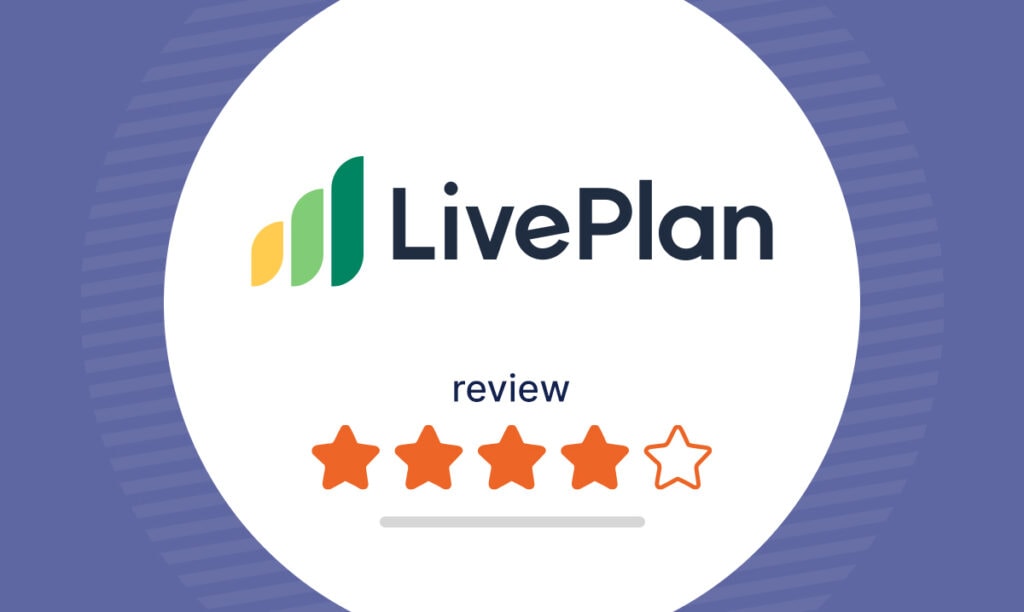
LivePlan Software Review: Features, Cost, Pros & Cons
Published on September 15, 2023
When you’re starting a business, a business plan is essential whether you’re going to obtain financing or not. Creating a business plan helpsyou ...
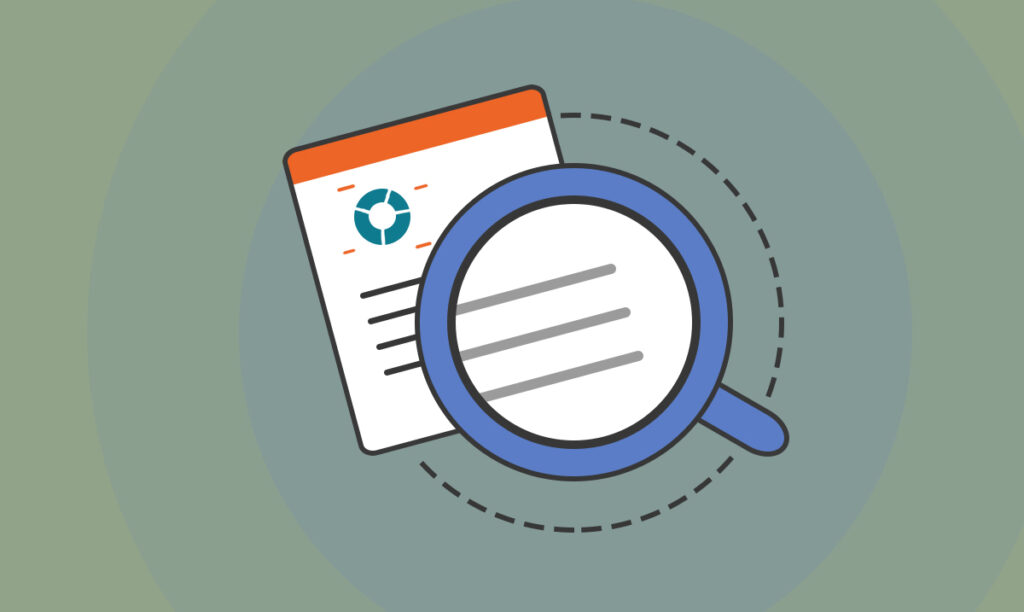
What to Include in Your Business Plan Appendix?
Published on September 13, 2023
Launching a business involves countless tasks, and one of the crucial early hurdles is writing a business plan. Many entrepreneurs who aren’tlooki ...
No thanks, I don't want to stay up to date on industry trends and news.

- Customer Reviews
- Net 30 Account
- Wise Services
- Steps & Timeline
- Work at a Glance
- Market Research at a Glance
- Business Plan Writing Services
- Bank Business Plan
- Investor Business Plan
- Franchise Business Plan
- Cannabis Business Plan
- Strategic Business Plan
- Corporate Business Plan
- Merge and Acquisition Business Plan (M&A)
- Private Placement Memorandums (PPM)
- Sample Business Plans
- Professional Feasibility Study
- PowerPoint Presentations
- Pitch Deck Presentation Services
- Business Plan Printing
- Market Research
- L-1 Business Plan
- E-2 Business Plan
- EB-5 Business Plan
- EB-5 Regional Centers
- Immigration Attorneys
- Nonprofit Business Plan
- Exit Business Planning
- Business Planning
- Business Formation
- Business License
- Business Website
- Business Branding
- Business Bank Account
- Digital Marketing
- Business Funding Resources
- Small Business Loans
- Venture Capital
- Net 30 Apply

8 Things You Need in a Business Plan
Table of Contents
What is a business plan?
Need assistance in writing a business plan, eight key components of business plans, 1. executive summary, 2. business description, free example business plans, 3. market analysis, 4. marketing and sales strategy, 5. operations plan, 6. management and organization, 7. financial plan, 8. appendix.
The Harvard Business Review says a good business plan is super important for entrepreneurs. It’s like a guide for them in the tricky world of business. The plan has different parts, and each part is like a piece of the puzzle for success.

For example, there’s the short and powerful Executive Summary that tells the most important things about the business. Then, there’s the smart Market Analysis that helps you understand what customers want.
All of these parts work together to make a strong plan. So, let’s take a closer look at these important pieces that help turn business dreams into successful reality.
A business plan is a detailed document that explains how a business works and what it aims to achieve. It outlines the business’s goals, strategies , and resources. It’s like a roadmap for the business, helping it stay on course and navigate challenges.
The plan typically includes sections about the business’s description , market research , marketing and sales strategies, operations, management, and financial projections .
Entrepreneurs use it to clarify their vision, secure funding, and measure progress. It’s a crucial tool for anyone starting or running a business, helping them make informed decisions and work toward success.
Contact our award-winning business plan writers now!
Crafting a business plan is akin to laying the foundation for a grand architectural masterpiece. It’s your roadmap to success, a strategic blueprint that breathes life into your entrepreneurial dreams. Allow me to take you on a journey through the essential components of this vital document.
- Executive Summary
- Business Description
- Market Analysis
- Marketing and Sales Strategy
- Operations Plan
- Management and Organization
- Financial Plan
Picture this as the dazzling opening act of your business plan, where you showcase your vision, mission, and why your venture is destined for greatness. It’s a compelling glimpse into the heart and soul of your business.
It’s like a short summary of your business, including what it does and what makes it special.
- Advice: Keep it concise and engaging. Think of it as a teaser that makes people want to read more. Highlight what makes your business unique.
Here, we dive deep into the DNA of your business. You’ll spill the beans on what you do, your industry, your history, and your grand plans for the future. It’s a snapshot that captures the essence of your business.
This part explains your business in detail, like what it sells, the industry it’s in, and its history.
- Advice: Be clear about what your business does and why it matters. Describe your industry and explain how your business fits into it.
Explore our free business plan samples now!
This section is where we turn detective. We unearth market trends, study customer behaviors, and dissect your competitors. It’s a treasure trove of insights that helps you navigate the marketplace.
Here, you look at the market your business is in. You study things like customer behavior and what other businesses are doing.
- Advice: Research thoroughly. Understand your customers’ needs and your competition. Show that you know your market inside and out.
Imagine this as the stage where you reveal your magic tricks. Here, you outline how you’ll entice and retain your customers. It’s where the art of attracting and selling meets strategy.
This section talks about how you’ll get customers and sell your products or services.
- Advice: Outline your plan for attracting customers and selling your products or services. Focus on how you’ll reach your target audience and convince them to buy from you.
Ever wondered how the show runs backstage? This is where you spill the beans. From location to logistics, it’s the nitty-gritty of daily operations. It’s the backbone that keeps your business standing tall.
It’s about how your business will work day-to-day, like where you’ll be located and how you’ll make your products.
Advice: Detail how your business will operate day-to-day. Discuss your location, equipment, suppliers, and how you’ll ensure quality.
Introducing the cast and crew of your business. Who’s in charge? What’s their expertise? It’s where you showcase your dream team and the hierarchy that keeps everything in check.
This part introduces the people running the business and how it’s organized.
- Advice: Introduce your team and their qualifications. Explain who’s in charge and how your business is structured.
This section is your crystal ball into the future. It predicts your financial performance, balances your books, and forecasts cash flows. Investors love it, and you will too.
It’s like a prediction of how much money your business will make and spend in the future.
Advice: Be realistic with your financial projections. Include income, expenses, and cash flow predictions. Show how you’ll make a profit.
This is your secret stash. All those extra documents, licenses, contracts, and accolades find their home here. It’s the vault of credibility that adds weight to your plan.
This is where you put extra documents like licenses, contracts, and other important stuff.
- Advice: Use this section for supporting documents. Include licenses, contracts, and anything that adds credibility to your plan.
Hire our professional business plan writing consultants now!
Remember, your business plan isn’t set in stone. It’s a living, breathing document that evolves with your journey. It’s your guiding star, your go-to reference, and your pitch to investors, all rolled into one.
With a well-crafted business plan, you’re equipped to clarify your vision, rally support from investors, and steer your venture to success. So, let’s get started on your masterpiece!
Related Posts

Why Experienced Legal Consultation is Crucial for New Businesses

Creating a ‘Second Brain’ to Manage Information Overload and Enhance Focus

What Are Mobile App Development Services? Guide for Businesses and Startups
Quick links.

- Investor Business Plans
- M&A Business Plan
- Private Placement
- Feasibility Study
- Hire a Business Plan Writer
- Business Valuation Calculator
- Business Plan Examples
- Real Estate Business Plan
- Business Plan Template
- Business Plan Pricing Guide
- Business Plan Makeover
- Business Credit Cards
- SBA Loans, Bank Funding & Business Credit
- Finding & Qualifying for Business Grants
- Leadership for the New Manager
- Content Marketing for Beginners
- All About Crowdfunding
- A Comprehensive Guide to Venture Capitalists
- EB-5 Regional Centers, A Step-By-Step Guide
- Logo Designer
- Landing Page
- PPC Advertising

- Business Entity
- Business Licensing
- Virtual Assistant
- Business Phone
- Business Address
- E-1 Visa Business Plan
- EB1-A Visa Business Plan
- EB1-C Visa Business Plan
- EB2-NIW Business Plan
- H1B Visa Business Plan
- O1 Visa Business Plan
- Business Brokers
- Merger & Acquisition Advisors
- Franchisors
Proud Sponsor of
- 1-800-496-1056

- (613) 800-0227

- +44 (1549) 409190

- +61 (2) 72510077

🎧 Real entrepreneurs. Real stories.
Subscribe to The Hurdle podcast today!
11 Key Components of a Business Plan

3 min. read
Updated August 1, 2024

Somebody asked me what the key components of a good business plan were, and I’m glad they did—it’s one of my favorite topics.
It gives me a chance to review and revise another of the lists that I’ve done off and on for years (such as the one from yesterday on common business plan mistakes ).
- 1. Measure a business plan by the decisions it causes
I’ve written about this one in several places. Like everything else in business, business plans have business objectives.
Does the plan accomplish its objective ? Whether it is better management, accountability, setting stepping stones to the future, convincing somebody to invest, or something else?
Realistically, it doesn’t matter whether your business plan is well-written, complete, well-formatted, creative, or intelligent. It only matters that it does the job it’s supposed to do. It’s a bad plan if it doesn’t.
- 2. Concrete specifics
Dates, deadlines, major milestones, task responsibilities, sales forecasts, spending budgets, and cash flow projections.
Ask yourself how executable it is. Ask yourself how you’ll know, on a regular basis, how much progress you’ve made and whether or not you’re on track.
- 3. Cash flow
Cash flow is the single most important concept in business. A business plan without cash flow is a marketing plan, strategic plan, summary, or something else—and those can be useful, but get your vocabulary right.
A business model, lean canvas, pitch deck, and so on can be useful in some contexts, like raising investment. But those aren’t business plans.
- 4. Realistic
While it is true that all business plans are wrong , assumptions, drivers, deadlines, milestones, and other such details should be realistic, not crazy.
The plan is to be executed. Impossible goals and crazy forecasts make the whole thing a waste of time.
Brought to you by
Create a professional business plan
Using ai and step-by-step instructions.
Secure funding
Validate ideas
Build a strategy
- 5. Short, sweet, easy-to-read summaries of strategy and tactics
Not all business plans need a lot of text.
The text and explanations are for outsiders, such as investors and bankers; however, many companies ought to use business planning to improve their business operations. If you don’t need the extra information, leave it out.
Define strategy and tactics in short bullet point lists. Tactics, by the way, are related to the marketing plan, product plan, financial plan, and so on. Strategy without tactics is just fluff.
- 6. Alignment of strategy and tactics
It’s surprising how often they don’t match.
Strategy is focus, key target markets , key product/service features, important differentiators, and so forth. Tactics are things like pricing, social media, channels, and financials, and the two should match.
A gourmet restaurant (strategy) should not have a drive-through option (tactics.)
- 7. Covers the event-specific, objective-specific bases
A lot of components of a business plan depend on the usage.
Internal plans have no need for descriptions of company teams. Market analysis hits one level for an internal plan but often has to be proof of market or validation for a plan associated with investment. Investment plans need to know something about exits; internal plans don’t.
- 8. Easy in, easy out
Don’t make anybody work to find what information is where in the plan. Keep it simple.
Use bullets as much as possible, and be careful with naked bullets for people who don’t really know the background. Don’t show off.
- 9. As lean as possible
Just big enough to do the job . It has to be reviewed and revised regularly to be useful. Nothing should be included that isn’t going to be used.
- 10. Geared for change
A good business plan is the opposite of written in stone. It’s going to change in a few weeks.
List assumptions because reviewing assumptions is the best way to determine when to change the plan and when to stick with it.
- 11. The right level of aggregation and summary
It’s not accounting. It’s planning.
Projections look like accounting statements, but they aren’t. They are summarized. They aren’t built on elaborate financial models. They are just detailed enough to generate good information.
- Download a free business plan template
If you want to increase the chances of your business plan checking off everything in this list, then download our free business plan template . Created by experienced entrepreneurs, this template is investor-ready and structured to help you create a useful business plan.
Tim Berry is the founder and chairman of Palo Alto Software , a co-founder of Borland International, and a recognized expert in business planning. He has an MBA from Stanford and degrees with honors from the University of Oregon and the University of Notre Dame. Today, Tim dedicates most of his time to blogging, teaching and evangelizing for business planning.

Table of Contents
Related Articles

10 Min. Read
When Should You Write a Business Plan?

11 Min. Read
Use This Simple Business Plan Outline Example to Organize Your Plan

7 Min. Read
5 Consequences of Skipping a Business Plan

12 Min. Read
Do You Need a Business Plan? Scientific Research Says Yes
The LivePlan Newsletter
Become a smarter, more strategic entrepreneur.
Your first monthly newsetter will be delivered soon..
Unsubscribe anytime. Privacy policy .

The quickest way to turn a business idea into a business plan
Fill-in-the-blanks and automatic financials make it easy.
No thanks, I prefer writing 40-page documents.

Discover the world’s #1 plan building software
AI ASSISTANTS
Upmetrics AI Your go-to AI-powered business assistant
AI Writing Assist Write, translate, and refine your text with AI
AI Financial Assist Automated forecasts and AI recommendations
AI Research Assist Your go-to AI-powered research assistant
TOP FEATURES
AI Business Plan Generator Create business plans faster with AI
Financial Forecasting Make accurate financial forecasts faster
INTEGRATIONS
QuickBooks Sync and compare with your QuickBooks data
Strategic Planning Develop actionable strategic plans on-the-go
AI Pitch Deck Generator Use AI to generate your investor deck
Xero Sync and compare with your Xero data
See how easy it is to plan your business with Upmetrics: Take a Tour →
AI-powered business planning software
Very useful business plan software connected to AI. Saved a lot of time, money and energy. Their team is highly skilled and always here to help.
- Julien López
BY USE CASE
Secure Funding, Loans, Grants Create plans that get you funded
Starting & Launching a Business Plan your business for launch and success
Validate Your Business Idea Discover the potential of your business idea
E2 Visa Business Plan Create a business plan to support your E2 - Visa
Business Consultant & Advisors Plan with your team members and clients
Incubators & Accelerators Empowering startups for growth
Business Schools & Educators Simplify business plan education for students
Students & Learners Your e-tutor for business planning
- Sample Plans
Plan Writing & Consulting We create a business plan for you
Business Plan Review Get constructive feedback on your plan
Financial Forecasting We create financial projections for you
SBA Lending Assistance We help secure SBA loans for your business
WHY UPMETRICS?
Reviews See why customers love Upmetrics
Blogs Latest business planning tips and strategies
Strategic Planning Templates Ready-to-use strategic plan templates
Business Plan Course A step-by-step business planning course
Customer Success Stories Read our customer success stories
Help Center Help & guides to plan your business
Ebooks & Guides A free resource hub on business planning
Business Tools Free business tools to help you grow
10 Essential Components of a Business Plan and How to Write Them
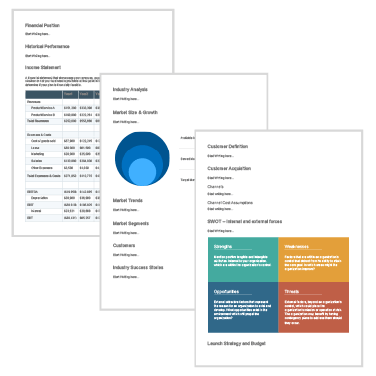
Business Plan Template
- July 15, 2024
- 13 Min Read
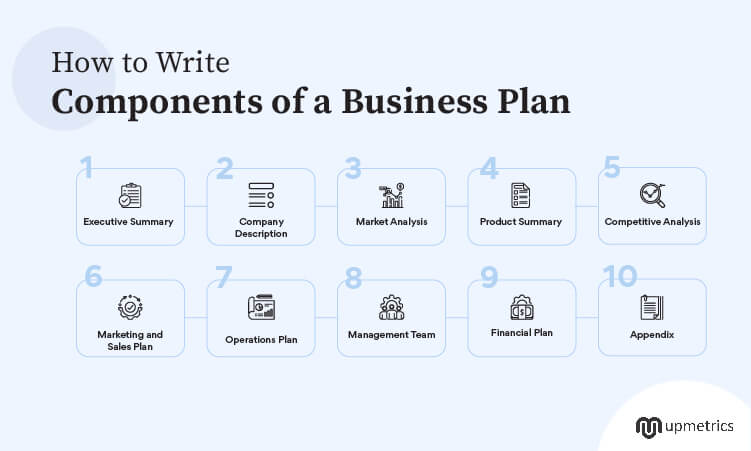
Entrepreneurs who write a business plan are 16% more likely to achieve business viability than those who don’t.
More and more entrepreneurs are realizing this and are choosing to write a business plan that corresponds with their vision.
Whether you are writing a lean plan or a detailed comprehensive plan—it must touch certain key points to aid in strategic decision-making and goal achievement.
Well, this blog post is here to help you. It talks about the 10 Business Plan Components that are quintessential for most plans.
So without beating around the bush, let’s dive right in.
10 Important Business Plan Components
Let’s now understand the key components that make a sound business plan.
1. Executive summary
The executive summary is one of the most important parts of a business plan. It’s the first thing potential investors will read and should therefore provide a clear overview of your business and its goals.
In other words, it helps the reader get a better idea of what to expect from your company. So, when writing an executive summary of your business, don’t forget to mention your mission and vision statement.
Mission statement
A mission statement is a brief statement that outlines your business objectives and what you want to achieve. It acts as a guiding principle that informs decisions and provides a clear direction for the organization to follow.
For instance, Google’s mission is to “organize the world’s information and make it universally accessible and useful.” It’s short, inspiring, and immediately communicates what the company does.
A mission statement should be realistic, and hint towards a goal that is achievable in a reasonable amount of time with the resources you currently have or are going to acquire in the near future.
Vision statement
While a mission statement is more actionable and has an immediate effect on the daily activities of the company, a vision statement is more aspirational and has a much broader scope.
In other words, it highlights where the company aims to go in the future and the positive change it hopes to make in the world within its lifetime.
2. Company description
The second component of your business plan is the company description. Here, you provide a brief overview of your company, its products or services, and its history. You can also add any notable achievements if they are significant enough for an investor to know.
A company overview offers a quick bird’s-eye view of things such as your business model, operational capabilities, financials, business philosophy, size of the team, code of conduct, and short-term and long-term objectives.
Products and services
The products and services part of your company description explains what your business offers to its customers, how it’s delivered, and the costs involved in acquiring new customers and executing a sale.
Company history
Company history is the timeline of important events for your business from its origin to the present day. It includes a brief profile of the founder(s) and their background, the date the company was founded, any notable achievements and milestones, and other similar facts and details.
If you’re a startup, you’ll probably not have much of a history to write about. In that case, you can share stories of the challenges your startup faced during its inception and how your team overcame them.
3. Market analysis
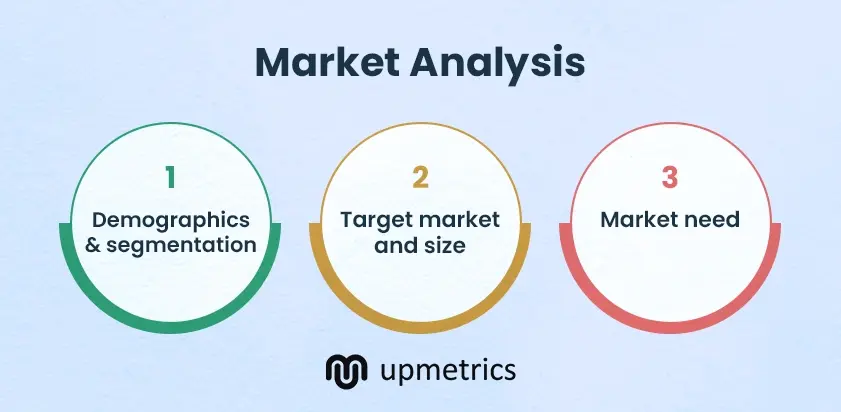
The market analysis section of your business plan provides an in-depth analysis of the industry, target market, and competition. It should underline the risks and opportunities associated with your industry, and also comment on the attributes of your target customer.
Demographics and segmentation
Understanding the demographics of your customers plays a big role in how well you’re able to identify their traits and serve them.
By dividing your target audience into smaller and more manageable groups, you can tailor your services and products to better meet their needs.
You can use demographics such as age, gender, income, location, ethnicity, and education level to better understand the preferences and behaviors of each segment, and use that data to create more effective marketing strategies.
Target market and size
Understanding your target market lies at the core of all your marketing endeavors. After all, if you don’t have a clear idea of who you’re serving, you won’t be able to serve well no matter how big your budget is.
For instance, Starbucks’ primary target market includes working professionals and office workers. The company has positioned itself such that many of its customers start their day with its coffee.
Estimating the market size helps you know how much scope there is to scale your business in the future. In other words, you’re trying to determine how much potential revenue exists in this market and if it’s worth the investment.
Market need
The next step is to figure out the market need, i.e., the prevalent pain points that people in that market experience. The easiest way to find these pain points is to read the negative reviews people leave on Amazon for products that are similar to yours.
The better your product solves those pain points, the better your chances of capturing that market. In addition, since your product is solving a problem that your rivals can’t, you can also charge a premium price.
To better identify the needs of your target customers, it helps to take into account things such as local cultural values, industry trends, buying habits, tastes and preferences, price elasticity, and more.
4. Product Summary
The product summary section of your business plan goes into detail about the features and benefits that your products and services offer, and how they differ from your competitors. It also outlines the manufacturing process, pricing, cost of production, inventory, packaging, and capital requirements.
5. Competitive analysis
Unless you’ve discovered an untapped market, you’re probably going to face serious competition and it’s only going to increase as you scale your business later down the line.
This is where the competitive analysis section helps. It gives an overview of the competitive landscape, introduces your direct and indirect competitors, and highlights their strengths and market share.
In such an environment, it helps to have certain competitive advantages against your rivals so you can stand out in the market.
Simply put, a competitive advantage is the additional value you can provide to your customers that your rivals can’t—perhaps via unique product features, excellent customer service, or more.
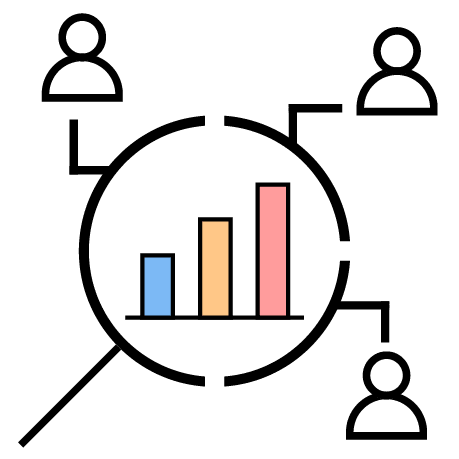
Want to Perform Competitive Analysis for Your Business?
Discover your competition’s secrets effortlessly with our user-friendly and Free Competitor Analysis Generator!
6. Marketing and sales plan
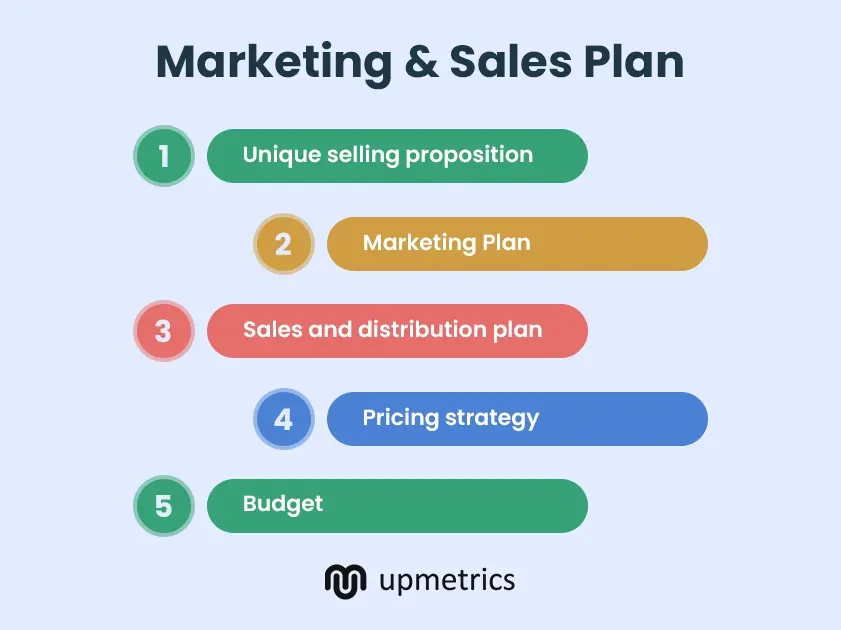
The marketing and sales plan is one of the most important business plan components. It explains how you plan to penetrate the market, position your brand in the minds of the buyers, build brand loyalty, increase sales, and remain competitive in an ever-changing business environment.
Unique selling proposition
A unique selling proposition (USP) conveys how your products and services differ from those of your competitors, and the added value those differences provide.
A strong USP will stand out in a competitive market and make potential customers more likely to switch to your brand—essentially capturing the market share of your rivals.
Marketing Plan
Your product might be unique, but if people don’t even know that it exists, it won’t sell. That’s where marketing comes in.
A marketing plan outlines strategies for reaching your target market and achieving sales goals. It also outlines the budget required for advertising and promotion.
You may also include data on the target market, target demographics, objectives, strategies, a timeline, budget, and the metrics considered for evaluating success.
Sales and distribution plan
Once people are made aware of your product, the next step is to ensure it reaches them. This means having a competent sales and distribution plan and a strong supply chain.
Lay out strategies for reaching potential customers, such as online marketing, lead generation, retail distribution channels, or direct sales.
Your goal here is to minimize sales costs and address the risks involved with the distribution of your product. If you’re selling ice cream, for example, you would have to account for the costs of refrigeration and cold storage.
Pricing strategy
Pricing is a very sensitive yet important part of any business. When creating a pricing strategy , you need to consider factors such as market demand, cost of production, competitor prices, disposable income of target customers, and profitability goals.
Some businesses have a small profit margin but sell large volumes of their product, while others sell fewer units but with a massive markup. You will have to decide for yourself which approach you want to follow.
Before setting your marketing plans into action, you need a budget for them. This means writing down how much money you’ll need, how it will be used, and the potential return you are estimating on this investment.
A budget should be flexible, meaning that it should be open to changes as the market shifts and customer behavior evolves. The goal here is to make sure that the company is making the best use of its resources by minimizing the wastage of funds.
7. Operations plan
The operations plan section of your business plan provides an overview of how the business is run and its day-to-day operations. This section is especially important for manufacturing businesses.
It includes a description of your business structure, the roles and responsibilities of each team member, the resources needed, and the procedures you will use to ensure the smooth functioning of your business. The goal here is to maximize output whilst minimizing the wastage of raw material or human labor.
8. Management team
At the core of any successful business lies a dedicated, qualified, and experienced management team overlooking key business activities.
This section provides an overview of the key members of your management team including their credentials, professional background, roles and responsibilities, experience, and qualifications.
A lot of investors give special attention to this section as it helps them ascertain the competence and work ethic of the members involved.
Organizational structure
An organizational structure defines the roles, responsibilities, decision-making processes, and authority of each individual or department in an organization.
Having a clear organizational structure improves communication, increases efficiency, promotes collaboration, and makes it easier to delegate tasks.
Startups usually have a flatter organizational hierarchy whereas established businesses have a more traditional structure of power and authority.
9. Financial Plan
Financials are usually the least fun thing to talk about, but they are important nonetheless as they provide an overview of your current financial position, capital requirements, projections, and plans for repayment of any loans.
A financial plan mainly includes detailed financial statements and a funding overview. Let’s check these components.

Financial Statements
A business plan should include detailed financial projections for the next couple of years. An investor would likely require an income statement, cash flow statement, balance sheet, and break-even analysis to understand the profitability, growth, and revenue of your business.
Along with your financial statements, you should also include an analysis of your startup costs, operating and administration costs, and forecasted sales.
Present these statements visually to make your financial plan easy to digest.
Funding requirements
Once an investor has read through your business plan, it’s time to request funding. Investors will want to see an accurate and detailed breakdown of the funds required and an explanation of why the requested funds are necessary for the operation and expansion of your business.
10. Appendix
The appendix is the last section of your business plan that includes additional supporting documents such as resumes of key team members, market research documents, financial statements, and legal documents.
In other words, anything important or relevant that couldn’t fit in any of the former sections of your business plan goes in the appendix.
And those are the essential business plan components you need to include in your plan.
Write your Business Plan with Upmetrics
A well-written business plan is an asset that navigates the business risks, optimizes the business strategies, and serves as a roadmap to help you achieve your business objectives.
Think about it and you will realize that the benefits of having a detailed business plan are ample. However, writing a business plan that covers these essential components and that too from scratch is a bit excessive.
Don’t worry. Using the Upmetrics business planning app you can streamline your planning process and create a detailed business plan in about 10 minutes.
Ready to create your plan?
Build your Business Plan Faster
with step-by-step Guidance & AI Assistance.
Frequently Asked Questions
How do you conduct a market analysis for a business plan.
To conduct market analysis, determine your industry and market size. Identify the emerging trends in your industry and the challenges that may arise. Analyze the market need and define your target audience by creating a buyer’s persona.
Competitors analysis is also a part of market analysis for which you will conduct a SWOT analysis of your top competitors.
Where can I find help writing a business plan?
You can use online business planning tools like Upmetrics , Bizplan, and even websites like SBA (Small Business Administration) to get resources and templates for writing a business plan.
What information is needed for the organization and management structure section?
To write your organization and management structure, you need a detailed overview of the people who would run your business. This includes people at the top, managerial positions, and administrative roles.
You also need an outline of organizational hierarchy and the flow of responsibilities and roles in your organization.
What should be included in a funding request section?
The funding section of business plans should outline your funding demand and explain your plans to utilize that fund. It should also include your repayment plan to help investors and banks evaluate your funding request.
About the Author
Upmetrics Team
Upmetrics is the #1 business planning software that helps entrepreneurs and business owners create investment-ready business plans using AI. We regularly share business planning insights on our blog. Check out the Upmetrics blog for such interesting reads. Read more
Get started with Upmetrics Al
- 400+ sample business plans
- Al-powered financial planning
- Collaborative workspace
Reach Your Goals with Accurate Planning


7 Key Components of a Precise Business Plan (2024)
Learn the art of entrepreneurship with a business plan. Dive into executive summaries, discover templates, and understand what to include for a strategic edge.

Hadar Peretz
7 minute read

Short answer
What is a Business Plan?
A business plan is a strategic document outlining a company's vision, objectives, market analysis, marketing and sales strategies, organizational structure, and financial projections to guide its growth.
Innovation in Planning: The Untold Ingredient to Business Success
In the turbulent landscape of entrepreneurship, where over 20% of small ventures falter in their early days , this blog post sheds light on the importance of a well-structured business plan.
It delves into the specifics of an executive summary, steps, what to include, and innovation in business planning , guiding businesses to thrive rather than become failure statistics.
3 Main Purposes of a Business Plan
Embarking on the entrepreneurial journey without a business plan is like sailing in turbulent waters without a map.
A business plan serves three pivotal roles that steer the helm of a startup toward the shores of success.
1) Navigation Tool: Direction for Your Business
A business plan is your business’s North Star, providing direction and ensuring you stay on course amidst the storm of uncertainties.
Let’s take the example of “Bean There Coffee Shop,” a start-up that envisioned being a community hub. Their business plan outlined their mission, target market, competition analysis, and financial forecasts.
This helped them navigate the competition and establish a loyal customer base by providing a cozy ambiance that encouraged customer interaction.
2) Attraction for Investments: Encouraging Potential Investors
Your business plan is your passport to the realm of investors. Bean There Coffee Shop required a modern interior to reflect its brand's personality.
The detailed business plan showcased their unique selling proposition to investors, who were enticed by the predicted ROI and agreed to fund the renovations.
3) Measurement of Success: Evaluating Progress and Growth
A business plan sets a baseline to measure progress. Bean There Coffee Shop sets quarterly targets for customer retention and revenue in its business plan.
By comparing actual performance with the plan, they gauged their success and identified areas for improvement.
6 Key Elements of a Business Plan
Drafting a business plan might seem daunting initially, but breaking it down into core components makes it manageable and effective.
It’s about telling your business’s story in a compelling way to garner support and guide your actions.
1) Executive Summary
The executive summary is your business narrative condensed into a snapshot. For instance, the executive summary of Bean There Coffee Shop encapsulated its vision, mission, the experience it aimed to provide, and financial aspirations succinctly, giving readers an essence of what to expect in the subsequent sections.
For more information on executive summary design, delve into the design aspects of an executive summary. To glean insights on crafting a compelling and visually appealing executive summary for your startup venture.
2) Company Description
Delve into the what and why of your business. Bean There Coffee Shop described its longing to foster community interactions, reflecting its ethos in its service and interior design , resonating with the locals and creating a clientele.
3) Market Analysis
Understanding your market landscape is crucial. Analyze your competitors, the preferences of your target audience, and market trends.
For Bean There Coffee Shop, studying coffee consumption trends and identifying a locale lacking a community-centric cafe was a game-changer.
4) Organization and Management
Outline your business structure and team. Investors want to know who steers the ship.
At Bean There Coffee Shop, the experienced baristas and a seasoned manager showcased a competent team, instilling confidence in potential investors.
5) Product Line
Describe your offerings. Bean There Coffee Shop highlighted its organic coffee and locally sourced pastries, striking a chord with environmentally conscious consumers.
6) Marketing and Sales
How you plan to lure customers and keep them coming back is vital. Bean There Coffee Shop’s loyalty programs and community events were a hit, creating a buzz and building a loyal customer base.
What is a Business Plan in Entrepreneurship?
In the realm of entrepreneurship, a business plan goes beyond being just a document—it is a vibrant testament to your business vision and the roadmap illustrating how you aim to overcome challenges and achieve your objectives.
It's like the script of your entrepreneurial saga waiting to unfold.
A Framework for Strategy
A business plan embodies the strategy and operations of your entrepreneurial endeavor. Here's a simplified breakdown of what it may encompass:
Market Analysis: A thorough exploration of the market including size, demographics, and consumer behaviors.
Competitor Analysis: A detailed examination of competitors, their strengths, weaknesses, and market position.
Marketing Strategy: Tactics and channels you plan to use to promote your business.
Financial Projections: Anticipated income, expenses, and profitability over a certain period.
Risk Management
Venturing into entrepreneurship is akin to navigating turbulent waters, where risks are inevitable. A business plan aids in:
Identifying Potential Risks: Whether it's market fluctuation or operational challenges, a business plan helps in foreseeing possible hurdles.
Devising Contingency Plans: Strategies to mitigate identified risks, ensuring the business stays on the right track.
For instance, a cafe's business plan might highlight the risk of decreased foot traffic during winter months and propose hosting indoor events or offering seasonal promotions to maintain revenue.
Communication with Stakeholders
A business plan serves as a conduit between entrepreneurs and stakeholders, articulating the business vision, goals, and strategies.
When seeking investments for expansion, a well-drafted business plan can effectively communicate the growth potential and return on investment to investors, facilitating the funding process.
7 Steps of a Business Plan
Creating a business plan is a blend of art and science, distilled into seven systematic steps to ensure your entrepreneurial venture is on a trajectory toward success.
1) Research, Research, and Research
Before you set pen to paper, immerse yourself in thorough research about your industry, market, and competition. This step lays the groundwork for informed decision-making as you progress through subsequent stages of business planning.
Industry Insights: Delve into current industry trends, challenges, and opportunities to gain a comprehensive understanding.
Market Dynamics: Explore market demographics, customer preferences, and purchasing behaviors to tailor your business approach.
Competitor Analysis: Assess the strengths, weaknesses, and market positioning of competitors to identify your business’s unique selling proposition.
2) Defining Your Business Objectives
Having clear objectives is crucial. Whether it's capturing market share, hitting revenue targets, or achieving expansion goals, defining these objectives paves the way for a focused strategy.
Establishing well-defined objectives also serves as a yardstick for measuring your business’s performance over time.
3) Company Description
Articulate the ethos, offerings, and unique value proposition of your business.
Providing a compelling company description helps stakeholders, including potential investors and employees, to grasp your business's mission and the problems it aims to solve
4) Market Analysis
Delve into market trends, customer behavior, and competition analysis to tailor your strategies.
A robust market analysis provides the data necessary to target your audience effectively and position your business for success in a competitive landscape.
5) Organization and Management
Detail your organizational structure, key team members, and their expertise.
Illustrating a solid organizational structure demonstrates your business’s capacity to execute its strategies and achieve its objectives.
6) Service or Product Line
Describe your products or services, highlighting the benefits to customers. Detailing the attributes and advantages of your offerings allows stakeholders to understand the value your business brings to the market.
7. Marketing and Sales
Illustrate your marketing and sales strategy to attract and retain customers.
Outlining clear strategies for marketing and sales is crucial for driving business growth and achieving your financial objectives.
Market Positioning: Define how your products or services will be positioned in the market and how you intend to differentiate your offerings from competitors.
Promotional Strategies: Outline the various promotional tactics you will employ, such as social media marketing, search engine optimization, and paid advertising.
Sales Process: Describe the steps of your sales process from lead generation to closing sales, and identify the metrics you will use to measure sales effectiveness.
Customer Retention: Highlight the strategies for customer retention such as loyalty programs, excellent customer service (through call centers and customer relationship management software ), and regular engagement to keep customers coming back.
Pricing Strategy: Determine the pricing strategy that will be most effective for your market, considering factors like cost, competition, and perceived value.
Time to Master Your Business Pitch
Now that you have a robust business plan, it’s time to translate it into a compelling business pitch.
The mastery of your pitch lies in knowing your audience, presenting data compellingly, and choosing the right format for resonance.
Understanding Audience Expectations
Understanding your audience is pivotal. Tailoring your pitch to meet the expectations of investors, potential partners, or customers enhances its effectiveness significantly.
Here’s our CEO, Itai Amoza, discussing the key elements that make a presentation engaging:

Emphasizing Data Visualization for a Better Appeal
Visual presentation of data, through graphs or charts, can make complex information easily digestible.
Using the right data visualization tools can effectively narrate the story of your venture compellingly.
PDF (conservative) vs. Interactive
Choosing between a traditional PDF or interactive presentations like those on Storydoc or PowerPoint can significantly impact the engagement level of your audience.
Interactive formats allow for dynamic presentations with embedded videos and other multimedia elements making your pitch more engaging and memorable.

Consider Business Plan One-pager
Creating a one-page business plan rather than a multi-page business plan involves summarizing your business's essential aspects concisely.
This includes your value proposition, company overview, market analysis, the problem and solution, marketing strategy, financial projections, and a call to action for potential investors or partners.
Ready to Narrate Your Story? Begin with This Business Plan Template
Ah, the exhilarating journey of a startup. It's like crafting a story, with characters, plots, and a dash of suspense on what the next chapter brings.
Now, before you get swept away in this narrative, remember, that every good story needs a structured outline, and in the startup world, that outline is your business plan.
Pick a business plan one-pager template:
Create story from scratch

I am a Marketing Specialist at Storydoc, I research, analyze and write on our core topics of business presentations, sales, and fundraising. I love talking to clients about their successes and failures so I can get a rounded understanding of their world.

Found this post useful?
Subscribe to our monthly newsletter.
Get notified as more awesome content goes live.
(No spam, no ads, opt-out whenever)
You've just joined an elite group of people that make the top performing 1% of sales and marketing collateral.
Create your best presentation to date
Try Storydoc interactive presentation maker for 14 days free (keep any presentation you make forever!)
13 Key Business Plan Components
The Startups Team

As is the case with most big projects, crafting a business plan is one of those things that takes an incredible amount of diligence and no shortage of courage. After all, your business idea is probably more than just some passionless money-making ploy — it’s your dream that you’re getting ready to lay bare for the world to scrutinize!
Never fear!
We have 4 sample business plans here to make it all less scary.

If you approach this with a firm understanding of what key information to include in each section of your business plan and know how each section works together to form a cohesive, compelling, and — above all — persuasive whole, it will make the writing process a whole lot less daunting.
We’re about to help you do exactly that by deconstructing each of the core components of your business plan one at a time and showing you exactly what information you should present to your readers so when all is said you done, you can walk away confidently knowing you’ve penned the most effective business plan possible.
As we learned in the “ What is a Business Plan? ” article, a business plan generally consists of the following sections:
Executive Summary
Company Synopsis
Market Analysis / Overview
Product (How it Works)
Revenue Model
Operating Model
Competitive Analysis
Customer Definition
Customer Acquisition
Management Team
Financial Statements
Let’s dive in, shall we?
1. Executive Summary
In the same way that a great movie trailer gives you a basic understanding of what the film is about while also enticing you to go check out the full-length feature, your Executive Summary serves as an overview of the main aspects of your company and business plan that you will discuss in greater length in the rest of your plan.
In other words, your Executive Summary is the highlight reel of your business plan.
Remember, you’re not giving away every last little detail about your company and business opportunity right up front. Just enough of the “good parts” to both inform and intrigue your reader to dig in further.
You do this by presenting a concise, 1-sentence outline of the following information:
Mission Statement
A “big idea” statement that introduces why your company exists, what it does for your customers, and why it matters.
Product/Service Summary
A brief description of your company’s products or services, with a special emphasis on what makes them unique.
Market Opportunity Summary
A quick explanation of the one or two key problems and/or trends your product/service addresses, and how it translates to a big opportunity for your company (and investors ).
Traction Summary
Highlight a few of the biggest accomplishments that you have achieved and describe how those accomplishments lay the groundwork for what’s to come.
Outline the next objectives or milestones that you hope to meet and what it means for the growth of your company.
Vision Statement
What is the scope or “big picture vision” of the business you are trying to build? If you’re in tech, are you trying to build the next Nest? If you’re in food and beverage, are you aiming to be the next Chipotle? In other words, how big is this company going to get, and why should an investor/partner/hire be excited to be a part of it?
A word of advice:
While your Executive Summary is the first piece of content people will read in your business plan, it’s usually a good idea to write this section last so you can take a step back after you’ve written everything and have a better sense of which high-level information you want to pull from the rest of your plan to focus on here.
First impressions are everything!
2. Company Synopsis
The Company Synopsis section is where you provide readers with a more in-depth look at your company and what you have to offer.
Before your readers will ever bother caring about things like your marketing strategy or your financial assumptions, they’ll want to know two absolutely fundamental details that will set up the rest of the plan that follows:
What painful PROBLEM are you solving for your customers?
What is your elegant SOLUTION to that problem?
You might have the most revolutionary product the world has ever seen, but if you don’t take the time to carefully articulate why your product exists in the first place and how it helps your customers solve a pain point better than anything else out there, nothing else in your business plan really matters from the reader’s perspective.
If you spend the majority of your time on any one part of your business plan, take the time to really nail this part. If you can build an engaging story around the problem that your audience can relate to, it makes the payoff of your solution statement all the more powerful.
When considering how to position your problem in the context of your business plan, think to yourself: what is the single greatest problem my customers face? How do other solutions in the market fail to alleviate that problem, thus creating a major need for my product?
Once you’ve thoroughly explained the problem you’re setting out to solve, it’s time to tell investors how your product/service solves that problem beautifully.
The goal here is less about describing how your product or service actually works (you’ll get to that in the “How It Works” section later) than it is about communicating how your solution connects back directly to the problem that you just described.
Key questions to consider:
What is the product/service you’re offering?
In what way does it solve my customers’ most painful problem?
What impact does my solution have on my customers’ lives?
How does my product/service effectively address the biggest shortcomings of other solutions currently in the market?

3. Market Overview
While your problem and solution statements help set the stage and provide readers with insight into why you’re starting this company in the first place, clearly defining your market will allow you to call attention to the trends and industry conditions that demonstrate why now is the time for your company to succeed.
You’re going to want to supplement your own expertise with plenty of evidence in the form of market statistics and research to show readers that you’re not only an expert when it comes to your product, but your industry as well. Your goal here is to help illustrate:
The SIZE of the market opportunity your company is positioned to address
The amount of GROWTH occurring in your market
The TRENDS driving the demand for your solution
The SUCCESS STORIES happening with similar companies in your industry
Market Size & Growth
Indicating to your readers that your problem addresses a big enough market will play a huge role in how excited they’ll be about getting involved in helping your company. This is where you’ll want to put your research cap on and start uncovering some numbers that help your reader better understand:
How big the market is (locally/nationally/internationally)
Approximately how much revenue it generates every year
If it’s growing
How much it’s expected to grow over the next 5-10 years
What recent emerging trends have you developed your product/service in response to?
Are there any new technologies that have emerged recently that make your product/solution possible? Are there any specific brands or products you can point to that illustrate the demand for products/services like (but not too like) yours?
Examples of Trends
An increasing number of consumers are “cutting the cord,” replacing traditional cable subscriptions with subscriptions to services like Netflix, Amazon Prime and HBO NOW.
As the Baby Boomer generation continues to age, there is a growing demand for products that empower them to stay safe and maintain their independence for longer.
Consumers are increasingly seeking food options that feature locally-sourced ingredients.
The emergence of image recognition technology for smartphones.
Industry Success Stories
Are there any examples of similar companies that investors have supported that you could point to? Are there any recent acquisitions (examples of larger companies buying up companies similar to yours) that could bolster the case for your own exit strategy ? Are there any similar companies that have recently IPO’d (gone public)?

4. Product (How it Works)
You used your Company Synopsis section to cover why your new product delivers crazy value to your customers by breaking down the ways that it benefits your customers and meets a highly specific need for them.
Now it’s time to use your Product or How it Works section to get into the finer details around the mechanics of how it does so.
This might sound like they’re one and the same. Not exactly. And here’s a good way to distinguish this.
Let’s say you were building a subscription box service for pet flea treatment. In your Company Synopsis section, you’d probably spend your time talking about how your solution conveniently spares pet owners the hassle of remembering to make a vet appointment, traveling to the clinic, and waiting to talk with the vet just to pick up Scrambles’ medication.
In your How it Works section, on the other hand, you’d shift your focus to describing how your customers have the ability to choose from a variety of brand name medications, set their own delivery schedule, enjoy 2-day delivery, and gain real-time support 24/7 from a team of industry experts.
What are some of your product’s key features ?
How will customers actually use your product or service?
Is there any technology underlying your solution you will need to explain in order for readers to fully understand what your company does and how it works?
If your product or service has some sort of proprietary element or patent at the core of what makes it work, you might be a bit hesitant to show your hand for fear that someone might run off with your idea. While this is a completely understandable concern, know that this pretty much never happens.
That being said, you can still give your readers a clear idea of how your product or service works by explaining it through the lens of how it relates to the problems that your customers face without giving up your secret sauce.
Put another way, you don’t have to explicitly tell your readers the precise source code to your new app, but you will want to call attention to all of the great things it makes possible for your customers.
5. Revenue Model
It’s the age-old question that every business owner has had to answer: how will your company make money?
If you’re just starting out , clearly defining your framework for generating revenue might seem like somewhat of a shot in the dark. But showing investors you have even a cursory idea of how you will convert your product or service into sales is absolutely fundamental in lending credibility to your business plan.
You’ll want to determine the following:
Revenue Channels
Are you leveraging transaction-based revenue by collecting one-time payments from your customers? Are you generating service revenue based on the time spent providing service to your customers? Are you following a recurring revenue model selling advertising and monthly subscriptions for your mobile app?
What are your price points and why have you set them that way? How does your pricing compare with similar products or services in the market?
Cost of goods sold, otherwise known as COGS, refers to the business expenses associated with selling your product or service, including any materials and labor costs that went into producing your product.
Your margin refers to the profit percentage you end up with after you subtract out the costs for the goods or services being sold. If you purchase your inventory for $8 per item from a supplier and sell them for $10, for example, your margin on sales is 20%.
Why is this revenue model the right fit for this product/market/stage of development?
Are there any additional revenue sources that you expect to add down the line?
Have you generated any revenue to date? If so, how much?
What have you learned from your early revenue efforts?
If you haven’t started generating revenue, when will you “flip the switch”?
6. Operating Model
Where your Revenue Model refers to how you’re going to make money, your Operating Model is about how you’re going to manage the costs and efficiencies to earn it.
Basically, it’s how your business will actually run. For this component, you’ll want to focus on the following:
Critical Costs
Your Critical Costs are the costs that make or break your business if you can’t manage them appropriately. These essentially determine your ability to grow the business or achieve profitability.
Cost Maturation & Milestones
Often your Critical Costs mature over time, growing or shrinking. For example, it might only cost you $10 to acquire your first 1,000 users, but $20 to acquire the next 10,000. It’s important to show investors exactly where costs might improve or worsen over time.
Investment Costs
Investment costs are strategic uses of capital that will have a big Return on Investment (ROI) later. The first step is to isolate what those investment costs are. The second step is to explain how you expect those investments to pay off.
Operating Efficiencies
What can you do from an efficiency standpoint that no one else can? It could be the way you recruit new talent, how you manage customer support costs, or the increasing value your product provides as more users sign up.

7. Competitive Analysis
Now that you’ve introduced readers to your industry and your product, it’s time to give them a glimpse into the other companies that are working in your same space and how your company stacks up.
It’s important to research both your direct competitors (businesses that offer products or services that are virtually the same as yours) and your indirect competitors (businesses that offer slightly different products or services but that could satisfy the same consumer need).
A skimpy Competitor Analysis section doesn’t tell investors that your solution is unrivaled. It tells them that you’re not looking hard enough.
Pro tip: avoid saying that you have “no competitors” at all costs.
Why? Because while there may not be anyone exactly like you out there, if you say this, the investor is more than likely thinking one of two things: Either, “They don’t know what they’re talking about,” or, “If there’s truly no competition, is there even a market worth pursuing here at all?”
When you set out to identify your fiercest competitors, ask yourself this:
What products/services are my target customers using to solve this problem now?
What products/services could they potentially use to solve this problem now?
Identify at least three sources of competition and answer the following questions about each one:
Basic Information
Where is your competitor based? When was the company founded? What stage of growth is your competitor in? Are they a startup? A more established company?
How much revenue does your competitor generate each year? Approximately how many users/customers do they have? Have they received venture funding? How much? From whom?
Similarities & Differences
What are the points of similarity between your competitor and you in terms of the offering, price point, branding, etc? What are the points of difference, both for the better and for the worse?
Strengths & Weaknesses
What are your competitors’ biggest strengths? What do you plan to do to neutralize those strengths? What are your competitors’ biggest weaknesses? How do they translate into an advantage for your company?
8. Customer Definition
The name of the game here is to know your audience !
This is where you show readers that you know who your audience is (who’s most likely to buy and use your product), where they are, and what’s most important to them. Are they price-conscious? Do they value convenience? Are they concerned about environmental impact? Do they tend to be early adopters of new technologies?
Once you have a good idea of your customer personas and demographics, you’ll want to explain how you’re designing your products/services, branding, customer service, etc. to appeal to your target audience and meet their needs.
Who are the people that your product/service is designed to appeal to?
What do you know about customers in this demographic?
Does your target audience skew more male or more female?
What age range do your target customers fall in?
Around how many people are there in this target demographic?
Where do your target customers live? Are they mostly city dwellers? Suburbanites?
How much money do they make?
Do they have any particular priorities or concerns when it comes to the products/services they buy?
9. Customer Acquisition
Now that we know who your customers are, the next question is — how do you plan on getting them ? This essentially refers to your marketing plan where you’ll go into detail about how you intend on raising awareness for your brand to expand your customer base .
Which channels will you use to acquire your customers? Direct sales? Online acquisition (paid ads, organic SEO, social, email)? Offline acquisition (newspaper, TV, radio, direct mail)? Channel partners (retailers, resellers)? Word-of-mouth? Affiliates?
Channel Cost Assumptions
There are hard costs associated with every customer acquisition channel. Yes, even social media. It’s your job here to forecast and compile all of the associated costs with a particular channel so that you can arrive at a preliminary budget for what it would cost to use this channel.
Are there specific subcategories of customers that you plan to target first?
Will you introduce your product in certain key geographic locations?
Are there specific components of your product offering that you will introduce to the market first?
Are there any existing brands that you are planning to partner with to increase brand awareness / expedite market penetration?

10. Traction
Many investors see hundreds of deals every year.
If you want to stand a chance of making any sort of meaningful impression, it’s important to show them that your business is more than just an idea and that you’ve already got some irons in the fire.
Traction is a huge part of making that case.
When investors see that Founders are already making things happen, they think to themselves, “Wow, look at everything they’ve already accomplished! If they can do that much by themselves, just think what they can do with my money behind them!”
Here are some common categories of traction that can help emphasize your business is gaining momentum:
Product Development
Where are you in the product development process? Do you have a working prototype? Is your product already in the market and gaining customers?
Manufacturing/Distribution
Do you already have an established partner for production/manufacturing? How about distribution? Tell us about your relationships and what they can handle.
Early Customers & Revenue
Do you have any existing customers? If so, how many, and how fast is your customer base growing? Have you started generating revenue? If so, how much?
Testimonials & Social Proof
Do you have any client reviews or comments that can illustrate positive customer responses to your product/service? Has your product/service been reviewed/endorsed by any industry experts? Do you have any high-profile customers (celebrities or industry experts if it’s a B2C product, well-known brands if it’s a B2B product)
Partnerships
Have you secured partnerships with any established or notable companies or brands?
Intellectual Property
Do you have any patents for the technology or ideas behind your company?
Is your company name trademarked?
Press Mentions
Has your company been featured by any media outlets? Which ones?
11. Management Team
Your Management Team section is where you introduce your team and, if possible, explain how each team member’s background is highly relevant to the success of your company.
You may have gotten a Ph.D. in Chemical Engineering from Carnegie Mellon, but if you’re building the next hot dating app, that doesn’t really lend much credence to why you’re uniquely qualified for this particular product.
An ideal Management Team section shows investors that your team’s combination of skills, experience, relationships, and expertise make you the best group of people on the planet to drive the success of your company.
Each team bio should cover:
The team member’s name
Their title and position at the company
Their professional background
Any special skills they’ve developed as a result of their past experience
Their role and responsibilities at your company
It’s important to keep team bios focused and to the point: readers don’t need to know where you were born or what your favorite hobbies were growing up. They don’t even necessarily need to know what you studied in undergrad (unless what you studied in undergrad is super-relevant to what they’re doing at your company.)
Aim for around 3-5 sentences of good information on each team member.
12. Funding
Chances are you’re shopping your business plan around to secure capital for your project. If that’s the case , don’t forget to actually ask for the one thing you set out to achieve!
In fact, you’ll want to devote an entire section to your request for funding. This is your opportunity to tell investors:
What your funding goals are
How they can help you achieve those goals
What they have to gain from getting involved in your company
Funding Goal
How much funding do you need to move forward with your goals? How did you arrive at this figure?
What will investors get in exchange for their investment in your company?
Use of Funds
How will you use the funding that you secure from investors? Provide a very basic breakdown, either by amounts or by percentages, of how you plan to allocate the funds you receive. For example:
25%: R&D
25%: Marketing
25%: Product Development
25%: Key Hires
What key milestones will you and your company be able to achieve with the help of this funding?
Why Invest? / Conclusion
Wrap up your Funding section with by driving home why investors should get involved with your company. Is it the experience of your team? The originality of your product? The size of the market? Identify a few key factors that make your company a great opportunity from an investment perspective.

13. Financials
At last, we’ve arrived at everybody’s least favorite section of the business plan: Financials !
Your Financials section comes last after what we’ll call the more “narrative”-driven content that makes up the vast majority of your business plan.
It’s here where you’ll present your various spreadsheets, charts, tables, and graphs that communicate to investors your projections for the company in dollars and cents over the next few years. And while this is a numbers-dominant section, you’ll still want to back-up all of your figures with either a quick intro or summary explaining how you got there.
Because despite the fact that some people underplay financials as merely a guessing game, it’s crucial to remember that investors are looking for estimates, not guesses.
Simply put, you want to build your financial forecasts on a series of assumptions that incorporate as many known parameters as possible. Indicate how you arrived at these assumptions (maybe you compared them against similar products in the market, for example).
Some common elements included in your Financials section are:
Income Statement
A financial statement that showcases your revenues, expenses, and profit for a particular period and whether or not your business is profitable at that point in time.
Balance Sheet
A summary of your business’s net worth at a particular point, breaking it into assets, liabilities, and capital.
Cash Flow Projection
An estimate of the amount of cash that is expected to flow in and out of your business. Your cash flow projection will give you a good idea of how much capital investment you need to secure.
Break-Even Analysis
Just like it sounds, your break-even analysis helps you determine when your total revenue equals your total expenses. In other words, your break-even point. The total profit here equals 0.
If this sounds intimidating, it’s because it kind of is. On the plus side, there are some great online tools available designed to help you create super sleek financials and still maintain your sanity.
We’ve spent time picking apart each core component of a business plan, and as it has probably become abundantly clear, each section is essentially its own in-depth presentation within the overarching plan itself.
While no two business plans will ever be exactly the same, the key takeaway here is that every great plan incorporates the same basic elements that give investors the information they need when determining whether your business idea has legs or not.
Now that you’re ready to roll up your sleeves and finally launch into the writing process , you can refer back to this as you start tailoring these elements to your specific business. If you find yourself getting hung up along the way, check out one of our many other resources on business planning to help you tackle this project head-on!
Find this article helpful?
This is just a small sample! Register to unlock our in-depth courses, hundreds of video courses, and a library of playbooks and articles to grow your startup fast. Let us Let us show you!

IMAGES
VIDEO
COMMENTS
Learn how to create an effective business plan with 12 key components, such as executive summary, business description, market analysis, and financial projections. A business plan helps you achieve your goals, secure financing, and avoid mistakes in your business.
Learn how to write a business plan with eight essential sections, including executive summary, company description, products/services, market analysis, and more. Find out what investors and lenders are looking for and how to stand out in the market.
Learn what a business plan is and why it is important for the success of a company. Discover the 10 essential parts of a business plan, such as executive summary, market analysis, financial projection and more.
Every business has its own goals and organizational structure. Here are 10 key components of a successful business plan that you should be sure to have.
Need assistance in writing a business plan? Eight Key Components of Business Plans; 1. Executive Summary; 2. Business Description; Free Example Business Plans; 3. Market Analysis; 4. Marketing and Sales Strategy; 5. Operations Plan; 6. Management and Organization; 7. Financial Plan; 8. Appendix
For a thorough explanation of how to write a business plan, refer to Shopify's guide. 12 common components of a business plan. Business plans vary depending on the product or service. Some entrepreneurs choose to use diagrams and charts, while others rely on text alone. Regardless of how you go about it, good business plans tend to include ...
Learn what makes a good business plan from Tim Berry, an experienced entrepreneur and business planning expert. He covers topics such as cash flow, strategy, tactics, alignment, and more.
Learn the key points to include in your business plan, such as mission and vision statement, company description, market analysis, product summary, and competitive analysis. Download a free template and get tips on writing a comprehensive and effective plan.
Learn how to write a business plan with seven essential elements: executive summary, company description, market analysis, organization and management, product line, marketing and sales, and financial projections. Find out the purposes, benefits, and steps of a business plan for entrepreneurs.
Learn how to write a compelling business plan with 13 essential sections, including Executive Summary, Company Synopsis, Market Overview, and more. Find out what information to include in each section and how to structure your plan for maximum impact.